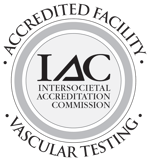Sclerotherapy remains one of the most effective treatments for spider and small varicose veins, helping patients achieve clearer, healthier-looking legs with minimal to no downtime. While many people are familiar with what happens during a sclerotherapy session, one of the most common questions patients ask is: “How long should I wait before my next treatment?”
The answer depends on the body’s healing process and what’s happening beneath the skin as the treated veins begin to close and fade.
What Happens After a Sclerotherapy Session
During sclerotherapy, a solution (called a sclerosant) is injected directly into the targeted vein. This irritates the vessel’s inner lining, causing it to collapse and seal shut. Over the next several weeks, the body naturally reroutes blood flow to healthier veins and gradually reabsorbs the treated vessel.
Even though veins may appear lighter within days, the true healing process takes time. Beneath the surface, inflammation and cellular repair are working together to remodel the tissue and fade discoloration.
Ideal Treatment Intervals
Most patients require a series of sclerotherapy sessions to achieve optimal results, especially if multiple areas or extensive networks of veins are being treated.
- Typical interval: In my practice when I initially see a patient, I recommend the number of treatment sessions they will most likely need. Patients usually come back 1 to 2 weeks after initial treatment for a “look and see” where they may receive additional treatment at that time. If things are progressing well after two or three treatments, I tell them to come back in 2 to 3 months for a follow-up if they would like additional treatment.
- Why waiting matters: Treating too soon can interfere with the healing process, while waiting too long may allow new visible veins to develop.
The key is timing sessions so that each round builds upon the last, improving circulation and cosmetic appearance gradually and safely.
What’s Happening Under the Skin
In the weeks between sessions:
- The sclerosant is still working causing the vein walls to scar and close off.
- The body’s lymphatic system begins breaking down the treated vein and reabsorbing it.
- Pigment changes (mild brown or tan lines) may occur as iron from red blood cells is metabolized, which is a normal and temporary part of the process.
- New, healthy venous pathways take over, improving blood flow and reducing venous pressure that contributes to spider vein formation.
These biological steps can’t be rushed but they ensure lasting and natural-looking results.
Recovery and Maintenance
Most patients return to normal activities immediately after treatment, wearing compression stockings as directed to enhance healing. Mild tenderness or bruising typically resolves within 1–2 weeks. Visible improvements can usually be seen after 2–3 sessions, with full results developing over several months.
Once the treatment plan is complete, many patients may benefit from annual maintenance sessions to manage any new veins that appear over time, which is a normal part of ongoing vein health.
The Takeaway on Sclerotherapy
Sclerotherapy is not just a cosmetic fix; it’s a gradual process of vascular healing. Spacing sessions correctly apart gives your body time to respond, repair, and reveal the best results.
At The Vein Institute of NJ our board-certified vascular specialists tailor each treatment plan to your individual vein patterns and healing response, ensuring you achieve the smoothest, most natural results possible.
Ready to take the next step?
Schedule a complimentary consultation to discuss your treatment plan and discover how our experts can help you achieve clearer, healthier legs safely and confidently.








.jpg?width=944&name=Castle-Connolly-Top-Doctors-Emblem-Large%20(4).jpg)